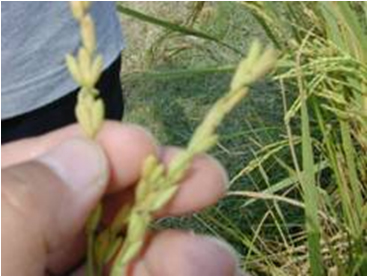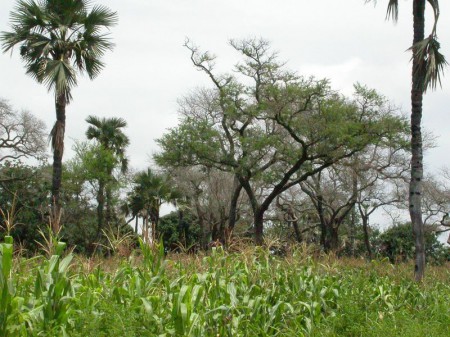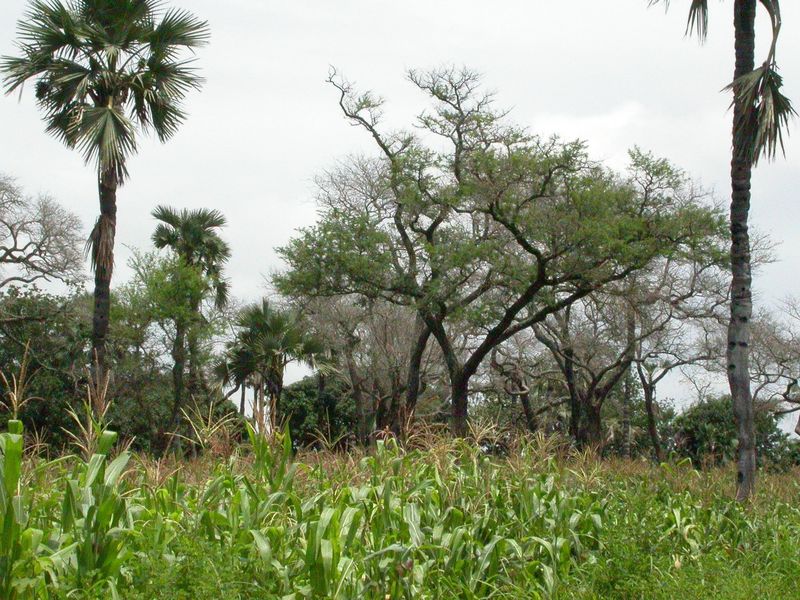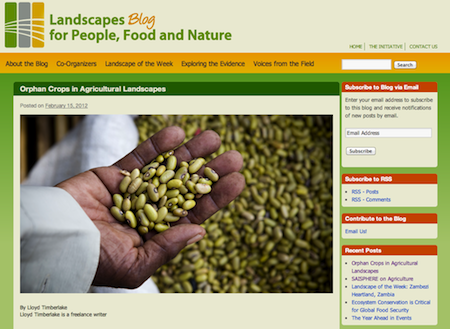- 1.24 kg of book about Biodiversity in Agriculture.
- Everybody’s already linked to The Economist on The Nutrition Puzzle but we’re not proud.
- And lots of people have linked to the biblical garden story; we’re proud to point out that one of the plants was a culturally important cultivated citrus.
- And while we’re in biblical mood, here’s a culturally important animal to go with that citrus.
- Biopirates plundering the oceans’ genetic resources must be stopped with international agreements, ‘cos that’ll work.
- Big session on Food security, climate change and climate variability at big scientific meeting. Eventually we’ll hear more.
- As when UK Chief Scientist tells Voice of America about agriculture and climate change.
- Small farmers in Mexico are making a difference to agrobiodiversity and politics.
- Fruitipedia! 433 fruits and counting.
- 16th Triennial Symposium of International Society for Tropical Root Crops in the works.
- Bayer CropScience buys into the Texas A&M University wheat genebank?
- Seeds survive in the permafrost. Good news for Svalbard.
- Seeds don’t survive in the permafrost. Bad news for Vikings?
- The connection between the the engravings found on ancient graves and current cattle brands in the same general area. Turkana, that is. Not much is the answer. Pity.
- And how did they make all that meat and milk safe for use, I hear you ask.
Nibbles: Underutilized foods, Overutilised food components, Potato microplants, Maize archaeology, More potatoes, Ag innovation
- Crops for the Future has news of a symposium to promote underutilized food resources in May.
- Or you could go to a report on fibre, an overused resource. I love how they blame the Limeys for all that’s wrong with nutrition.
- Potato Professionals hear the good news about in situ conservation using disease-free microplants.
- The archaeology of maize among the Mississippians.
- The archaeology of Mike Jackson among the Andean roots and tubers.
- Thomson Reuters Foundation has a big package on agricultural innovation. And many more topics you can trust.
Triple-grained rice news
What it is to have friends, especially knowledgeable friends. Bhuwon Sthapit, local rice wallah extraordinaire, ((I do hope that’s not a derogatory epithet. Let’s just say he knows more about rice than anyone I’ve ever met.)) responded quickly and in depth when asked what he knew about triple-grained rice.

Unique local rice landraces in Nepal are being lost, replaced by modern varieties. At least two of these are multi-seeded: Laila Majnu (the name refers to a pair of famous lovers, never separated until death) and Amaghauj (which means cluster of mango). Until 1999 Amaghauj was grown by one farmer on 3 katha of land, but was discontinued as the land was sold to another farmer. This local variety has a cluster of spikelets (at least 3 potential grains) originating from the same base; this heritable trait could potentially be used to breed new rice types offering increased yield. It is currently saved in community seed banks.
As Bhuwon also notes:
There is great potential to link community seed bank and national seed bank to harness such untapped and unknown resources.
And if you want even more, another friend, Ruaraidh Sackville Hamilton, Head of the IRRI genebank, points to Morphological Observations on Many Kerneled Grains in Rice. Don’t be scared by the Chinese; English follows.
LATER: For completeness, the name of the Bangladeshi variety which started all this, Biram Sundori, means “beautiful girl from Birampur,” which is the place where it is grown. Thanks to Zakir Sor for leading us all on this journey of discovery.
Why do celebrities adopt orphans?
Good news from Landscapes for People, Food and Nature. Orphan crops in Agricultural Landscapes, a recent post, tells us why the Green Revolution never took off in Africa (too diverse) and that part of the solution is that “Africa’s varied ecosystems do contain crop species very important to African farm families, if not to science”. The piece goes on to sing the praises of the African Orphan Crops consortium, which is devoting $40 million to sequence 24 species by the end of 2014. You know what we think of that. ((The list of species, by the way, may not have been finalised. There’s a survey, open until 24 February, where you can share your views. I’m looking forward to the survey report.))
There’s nothing new to be said about the AOC consortium, but one question remains. Why, in seeking to illustrate orphan crops, does LPFN illustrate its piece with a photo of a hand holding what is clearly Phaseolus vulgaris, a species that is beloved of science, small farmers and consumers in the Great Lakes area of Africa and beyond? ((Because WWF used the same photo on its page about the AOC consortium is not an explanation.)) We asked the photographer, but he is on assignment. However, our sources in the Nairobi markets confidently identified these, and said that the big yellow ones are known as Ugandan beans. Which is nice, because the actual caption with the photo says that it shows “Constantine Kusebahasa at the market, Rwenzori Mountains, Uganda”. Maybe he’s an orphan.

Oh look! A photo of Faidherbia albida, darling of the AOC consortium, in a landscape, and free to use, found in the Wikimedia Commons.
Nibbles: US Farm Bill, Polish chicks, Young Kenyan farmers, Jowar redux, Handwriting, Erna Bennett, Ant mutualism, Horizontal plastid movement, Horizon scanning
- Policy wonks start to worry about the next US Farm Bill and its effects on poor farmers elsewhere.
- Poles start to worry about their endangered chicks.
- The Youth in Agriculture gives agricultural biodiversity some love on St Valentine’s Day.
- “Can jowar ever replace rice?” Question expecting the answer no? (Jowar is sorghum.)
- Can anyone actually decipher what H.G. Wells wrote to FAO Director Lubin?
- A Memorial Service will be held for Erna Bennett, in English, at 12.30 hrs. on Friday, 9th March at Santa Balbina Church, Viale Guido Baccelli, Rome. It’s near FAO. And no, there’s no link.
- Ants help crop wild relative (among other things).
- Plastids move between crop and wild relative.
- Cambridge boffins look into crystal ball and see fully sequenced, N-fixing perennial cereals growing under sterile conditions. In deep ocean vents.

